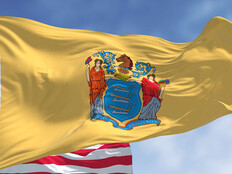5 Reasons Why Chicago Is Leading the Pack in Data and Technology
This year’s Social Media Week in Chicago turned a sharp focus on the technology that is powering our cities. In addition to the massive infrastructure that provides clean water and electricity to all its citizens, visionary CTO John Tolva is overhauling the digital groundwork of Chicago. He spoke during the session "When Social Transforms a City" (which you can watch below) and presented his innovative approach to Chicago’s technology. His program has already proved to be successful, and the future is promising.
Here are five things we learned about the technology that Chicago is bringing to its citzens:
- Did you know that Chicago has the most Internet traffic, by volume, of any U.S. city? In the 19th and 20th centuries, Chicago became a hub for railroads and, as a result, livestock. A century later, fiber-optic cables were laid on those same tracks, making the Windy City a very friendly place for data centers.
- One of Tolva’s strategies has been to link technology applications with locations in order to engage citizens and provide utility. Many of the city’s apps feature maps, including Plow Tracker and Sweep Around Us. The city also provides open data on their website and tools like this add context and value to existing information.
- Chicago's Transit Authority doesn’t have an official mobile app, and Tolva wants to keep it that way. Private companies have access to the data, so they have the opportunity to create functional, problem-solving apps for citizens. This is an innovative way to encourage developers, designers, architects and city planners to come together and address the issues of the city they live in.
- Open data provides a way to connect all of the digital devices in the city. What advantage is gained by allowing parking meters to communicate with traffic lights or bus stops? We won’t know until someone wrangles that data and produces an app or solution that leverages the power of many devices to serve a single function. “When I walk down the street, I see a potential landscape of networked public objects,” says Tolva.
- During the session’s Q&A, Tolva offered the observation that some digital problems were solved in analog a long time ago. For example, architects understand how to create public places for people to meet and interact. What lessons can the digital community learn from solutions like that?
Learn more about John Tolva’s presentation and the event by visiting: cdw.com/smwsocialcity and watch the presentation, which is broken into two parts, below.








